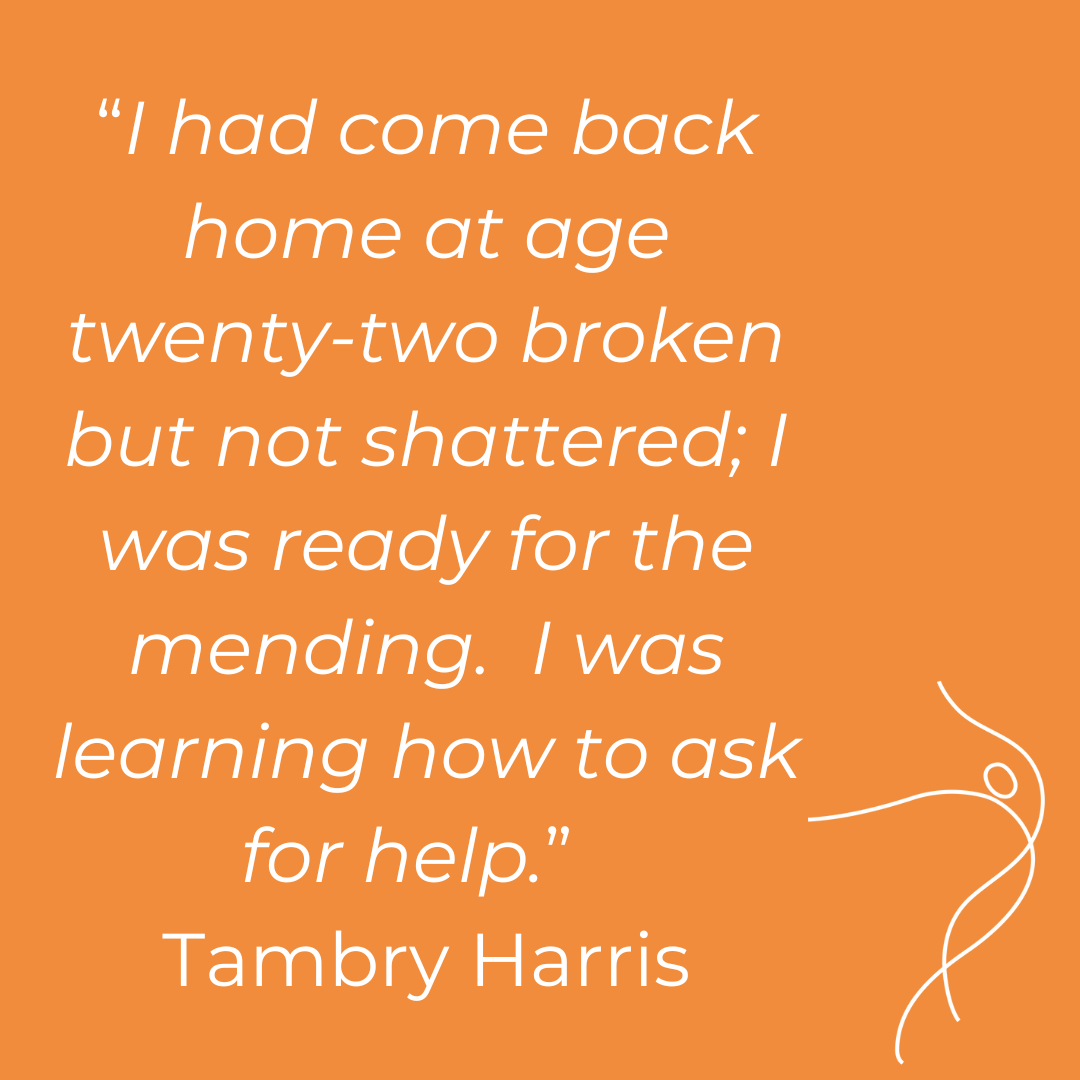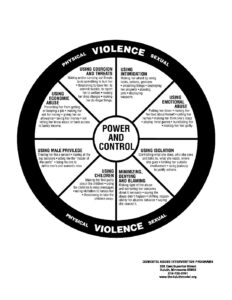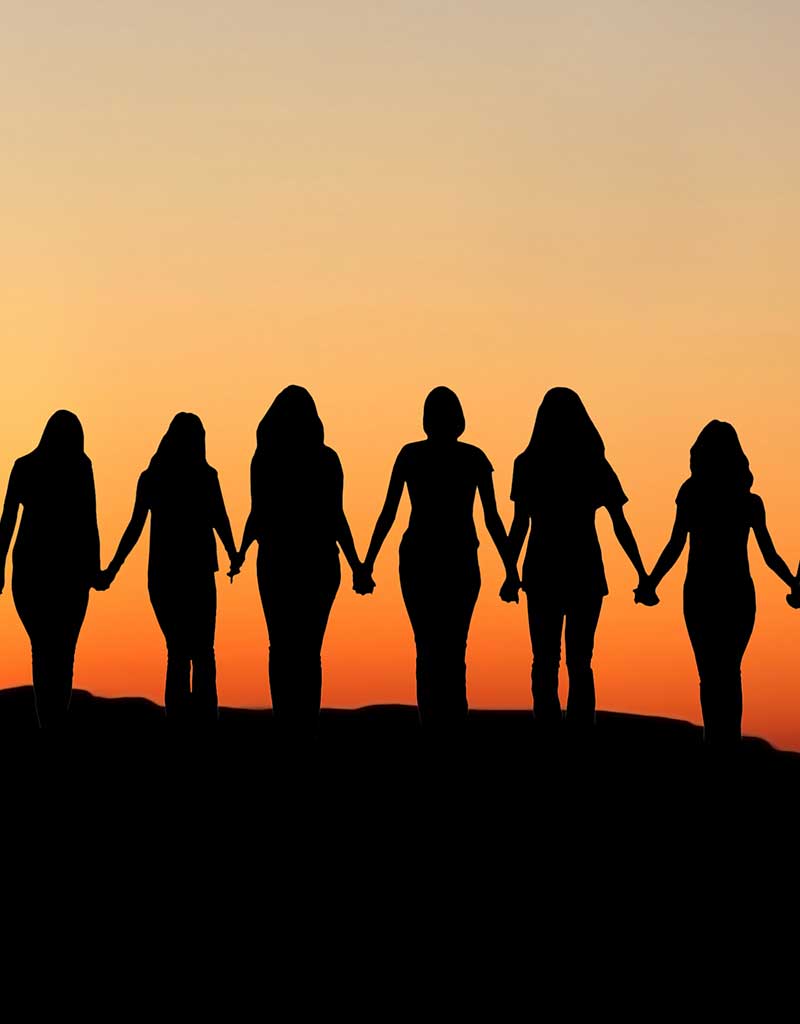Domestic Violence Awareness: Reclaiming Your Power and Making a Plan
This month, communities and advocacy organizations are raising awareness about the signs of abuse and ways to thwart it through sharing survivor stories and providing actionable resources.
The purpose of this blog is to help you reclaim your power and make a plan.
I offer my personal story as a way to provide a kindred spirit and encouragement to do what is right for you.
If you are reading this as a supporter, thank you! This information can help you become an ally to your loved one. There is more specific information available at the end of this blog for you.
Raising Awareness
October was first declared as National Domestic Violence Awareness Month in 1989 and is a time to acknowledge domestic violence survivors and be a voice for its victims.
Domestic violence is prevalent in every community and affects all people regardless of age, socio-economic status, sexual orientation, gender, race, religion, or nationality.
Physical violence is often accompanied by emotionally abusive and controlling behavior as part of a much larger, systematic pattern of dominance and control.
Domestic violence can result in physical injury, psychological trauma, and even death.
The devastating consequences of domestic violence can cross generations and last a lifetime.
Multiple forms of abuse are usually present at the same time in abusive situations, and it’s essential to understand how these behaviors interact so you know what to look for.
When we know what an abusive relationship looks like, we can then take steps to get help for ourselves as well as better support others who are experiencing abuse.


One Story (excerpts from Awakening the Light: A Survivors to Thrivers Going-Forward Story)
I share portions of my story to illustrate how I found the courage to leave and the importance of surrounding yourself with a support system. If you are encouraged by my story, I invite you to read it in full and join me on the healing journey.
After six months, I couldn’t take it anymore. My body started shutting down, and I could no longer ignore the impact of an abusive marriage. I decided it was better for me to be divorced than deceased. I had not let my mother come visit me in Houston because I was afraid to let her see what had happened and how bad things were for me. Although I hid the reality in our telephone calls, I knew that in person, I would have no way to hide my pain. When she did come to visit, I knew what needed to happen – find a way to leave him and transition back home. As the tears and truth flowed out, I knew she would help me reclaim my life.
I had to replant my feet, reestablish myself, and begin healing from the trauma I experienced in Houston. After I returned home, it was clear what had happened to me emotionally and physically. My soon-to-be ex-husband did not accept our separation and came caveman-like to the backdoor of my parents’ house. I wrapped myself up in a ball on the couch, terrified of what was coming next. To see my 5’6” father blocking my 6’2” soon-to-be ex-husband at the door of the house with a clarity I had never seen was heartening.
I had come back home at age twenty-two broken but not shattered; I was ready for the mending. I was learning how to ask for help. My parents and I created the separation plan – not just how to divide the few things that had been acquired in the short marriage, but also how to navigate the murky waters that lay ahead.
Reclaim Your Power
Domestic abuse is an attempt by abusive partners to gain or maintain power and control, and it comes in many forms.
Abuse usually isn’t isolated — it forms a pattern of behaviors that collectively make the victim question their own self-worth and become further entrenched in the abusive relationship. The Power and Control Wheel developed by the Domestic Abuse Intervention Project offers a useful tool to understand the dynamics of relational/domestic abuse.
Think of the wheel as a diagram of tactics that an abusive partner uses to keep their victims in a relationship.
- The inside of the wheel is made up of subtle, continual behaviors over time, while the outer ring represents physical and sexual violence.
- Abusive actions like those depicted in the outer ring often reinforce the regular use of other, more subtle methods found in the inner ring.
Knowledge is power. Being able to see your situation clearly is critical to reclaiming your power and your life. Here is a link to the wheel if you would like to print it and highlight all aspects that apply to you.
Note: The Power and Control Wheel assumes she/her pronouns for the victim and he/him pronouns for the perpetrator, but the abusive behavior that it details can happen to people of any gender or sexuality.

HOW DO I MAKE A SAFETY PLAN? Source: https://ncadv.org/tips-for-accessing-resources
Although you can’t control an abuser’s use of violence, you can plan how you will respond to future abusive or violent incidents, prepare for the possibility of an incident happening, and plan how to get to safety. It is your decision if and when you tell others that you have been abused, or that you are still at risk. Friends, family, and coworkers can help with your safety plan if they are aware of the situation and want to help.
Ask yourself the following questions:
- When I have to talk to the abuser, I can ____________________.
- When I talk on the phone with the abuser, I can ____________________.
- I can make up a “code word” for my family, co-workers, friends and counselor so they know when to call for help for me. My code word is ____________________.
- When I feel a fight coming on, I will try to move to a place that is lowest risk for getting hurt, such as ____________________ (at work), ____________________ (at home) or ____________________ (in public).
- I can tell my family, co-workers, boss, counselor or a friend about my situation. I feel safe telling ____________________.
- I can screen my calls, texts, emails, and visitors. I have the right to not receive harassing phone calls, texts or emails. I can ask friends, family members or co-workers to help me screen my contacts. I can ask these people for help: ____________________.
- I can call any of the following people for assistance or support if necessary and ask them to call the police if they see the abuser harassing me.
Friend: ____________________
Relative: ____________________
Co-worker: ____________________
Counselor: ____________________
Shelter: ____________________
Other: ____________________ - When leaving work, I can ____________________.
- When walking, riding, or driving home, if problems occur, I can ____________________.
- I can attend a victim’s/survivor’s support group with the Domestic Violence program, like ____________________.
- Contact Information I Need To Have:
Police Department: ____________________
Domestic Violence Program: ____________________
Sexual Assault Program: ____________________
Attorney: ____________________
Counselor: ____________________
Spiritual Support/Clergy: ____________________
Probation Officer: ____________________
Other: ____________________
ACCESSING RESOURCES
When you are in crisis, it is very difficult to look for assistance, make decisions and take care of yourself and others. An advocate, through your local domestic violence program, can help in many ways. They can identify resources in the community that otherwise may be unseen (like churches and individuals that will serve as support). They can start contact with a service provider and facilitate the process. They can also give support and encouragement. In these times when budgets are limited, having an “out of the box” perspective is important.
Some useful guidelines to finding support:
- Get a list of possible resources from different places, programs and organizations. Most states have the free phone service, 2-1-1, which will connect you to advocates who can help you find additional resources in your area.
- Have essential documents available when you go to an appointment: birth certificates, picture ID, driver’s license, passport, and utility bills (to show residency). Learn what documents you will need ahead of time.
- Make your calls from a place where you can engage in a conversation and take care of possible interruptions ahead of time (e.g., have little ones take a nap or call when children are playing at the neighbor’s).

Interactive Safety Planning Tool
https://www.thehotline.org/plan-for-safety/create-a-safety-plan/
Take some time to go through each section of this safety planning tool. You will be asked a series of questions to help you identify your safety options. You can use this tool on your own, or you can use it with a friend or an adult you trust.
At the end of the process, you will have a printable version of your personalized safety plan that you can reference whenever you need it. You can read it online, print it immediately, or have a link sent to your email. The link will be active for 24 hours; after that, your information will be deleted from the website.
You will also be given a pocket-sized emergency contact card that you can fill out with phone numbers and keep with you at all times so you always know how to contact the most important people.
Once you complete your safety plan, be sure to keep it in an accessible but secure location. You should also consider giving a copy of your safety plan to someone that you trust.

Reclaim power. Regain control.
Staying strong during the leaving process is hard… and critical. People who are in an abusive relationship will stay with their partner for a number of reasons:
- Their self-esteem is totally destroyed, and they are made to feel they will never be able to find another person to be with.
- The cycle of abuse, meaning the ‘honeymoon phase’ that follows physical and mental abuse, makes them believe their partner really is sorry and does love them.
- It’s dangerous to leave. Women are 70 times more likely to be killed in the weeks after leaving their abusive partner than at any other time in the relationship, according to the Domestic Violence Intervention program.
- They feel personally responsible for their partner, or their own behavior. They are made to feel like everything that goes wrong is their fault.
- They share a life. Marriages, children, homes, pets, and finances are a big reason victims of abuse feel they can’t leave.

Supporting a Loved One in a Domestically Violent Situation
Watching someone endure an abusive situation can be difficult under any circumstances, and it’s not always clear how best to respond when you see the warning signs of abuse. Your instinct may be to “save them” from the relationship, but abuse is never that simple. There are many ways that abuse appears, and there are many reasons why people stay in abusive situations.
Provide Essential Emotional Support by:
- Acknowledging that their situation is difficult and scary and that it’s brave of them to regain control.
- Not judging their decisions and refusing to criticize them or guilt them over a choice they make.
- Remembering that you cannot “rescue them,” and that decisions about their lives are up to them to make.
- Not speaking poorly of the abusive partner.
- Helping them create a safety plan.
- Continuing to be supportive of them if they do end the relationship and are understandably lonely, upset, or return to their abusive partner.
- Offering to go with them to any service provider or legal setting for moral support.
Provide Material Support by:
Depending on the situation, a survivor may be financially dependent on an abusive partner or otherwise lack access to material resources. One of the most immediate ways you can support someone experiencing relationship abuse is by helping them with their material needs.
- Helping them identify a support network to assist with physical needs like housing, food, healthcare, and mobility as applicable.
- Helping them by storing important documents or a “to-go bag” in case of an emergency situation.
- Encouraging them to participate in activities outside of their relationship with friends and family, and be there to support them in such a capacity
- Encouraging them to talk to people who can provide further help and guidance
- If they give you permission, helping document instances of domestic violence in their life, including pictures of injuries, exact transcripts of interactions, and notes on a calendar of dates that incidents of abuse occur.
- Not posting information about them on social media that could be used to identify them or where they spend time.
- Helping them learn about their formal legal rights through resources like Women’s Law, which provides information on domestic violence laws and procedures.
- With their permission, ensuring that others in the buildings where the survivor lives and works are aware of the situation, including what to do (and what not to do) during a moment of crisis or confrontation with an abusive partner.
This may seem like a lot, but consider taking it a step as a time. Also, know that you are worthy of a healthy, thriving life. We are here to encourage and support you.


 Talk To Tambry
Talk To Tambry
I am glad you have taken the time to engage with this blog. Sometimes it is helpful to process new insights that emerge. If you would appreciate brief time with a someone who understands, our Talk to Tambry offering is for you. For 30 minutes, you can receive support from Tambry who is a certified life coach, spiritual director and a survivor who has been on the journey as well. This is offered at a reduced rate of $50.




